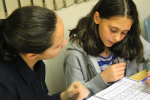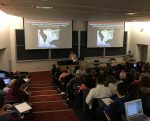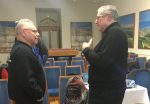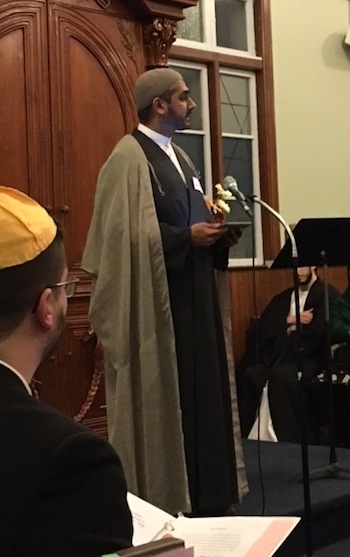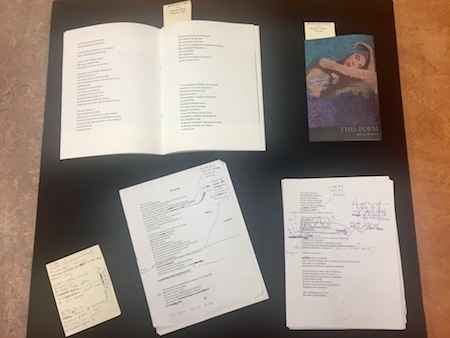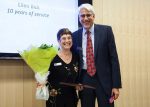T-Jex after-school supplementary program is a partnership between Schara Tzedeck Synagogue and Shalhevet Girls High School, where the older students mentor the younger. (photo from Shalhevet)
When friends approached Gila Ross several years ago to start a new Hebrew school in Vancouver, Ross turned for inspiration to a program she had previously run in Calgary for college students, refitting it for children.
The program, T-Jex – the Jewish Experience – is built around mentorship and is based out of Schara Tzedeck Synagogue. Vancouver’s Orthodox Shalhevet Girls High School (grades 8 to 12) sends carefully selected mentor volunteers to T-Jex to work one-on-one with students or in groups of two or three. The mentors work predominantly on building Hebrew-language skills with the children. Children also learn as a class with Ross, who is the main teacher and program director, and takes the lead teaching Jewish values, holidays and Torah study.
T-Jex, now in its fifth year, involves about 10 students a year. “It is an amazing opportunity,” Rivka Abramchik, principal of Shalhevet, told the Jewish Independent. “A big part of the Shalhevet curriculum, and the goals we set for our students during the five years they are with us, is to stand up and take leadership. This is an opportunity to take responsibility, to learn the concept of giving back to the community.”
She added, “The girls get to really see how one person can make a meaningful impact. T-Jex so beautifully intertwines with the desire the girls have to be part of Jewish continuity and gives them a chance to give in a way which also gives to the girls themselves. It’s a big commitment – to give up 90 to 130 minutes on a Tuesday afternoon is give up a lot of time for these girls. You would think teenagers would be reluctant but, actually, the idea of teaching a child, students get more inspired than you might think. We have repeats every year.”
Ross gives a presentation at Shalhevet annually to introduce the program to the school’s new students. The importance of committing for a whole year is stressed, as is the importance of engagement, motivation and responsibility.
“I really enjoy working with the kids at T-Jex,” said Grade 11 student Hadassa Estrin. “The gratifying feeling you get when you see them learning about their heritage is so special … like nothing else I’ve ever experienced.”
“Most of our students have been coming from word of mouth, from all over Vancouver and from across the Jewish spectrum,” said Ross. “They have heard from others that kids enjoy coming.”
Ross started a Facebook group for Jewish moms a year or so ago, which has become a virtual community. The group has also helped spread word about the Hebrew school.
Ross, who has six kids of her own, is the youth director at Schara Tzedeck, where she has spearheaded the synagogue’s Families That Give social action projects. She also teaches at Torah High, an after-school program, and works with her husband, Rabbi Samuel Ross, the director of Vancouver National Conference of Synagogue Youth.
“The most wonderful thing to see,” said Ross, “is the students wanting to be here and having fun. To see them take joy in learning and Jewish activities is what it’s all about.”
For more information, visit scharatzedeck.com/education-learning/t-jex-2.
Matthew Gindin is a freelance journalist, writer and lecturer. He writes regularly for the Forward and All That Is Interesting, and has been published in Religion Dispatches, Situate Magazine, Tikkun and elsewhere. He can be found on Medium and Twitter.

